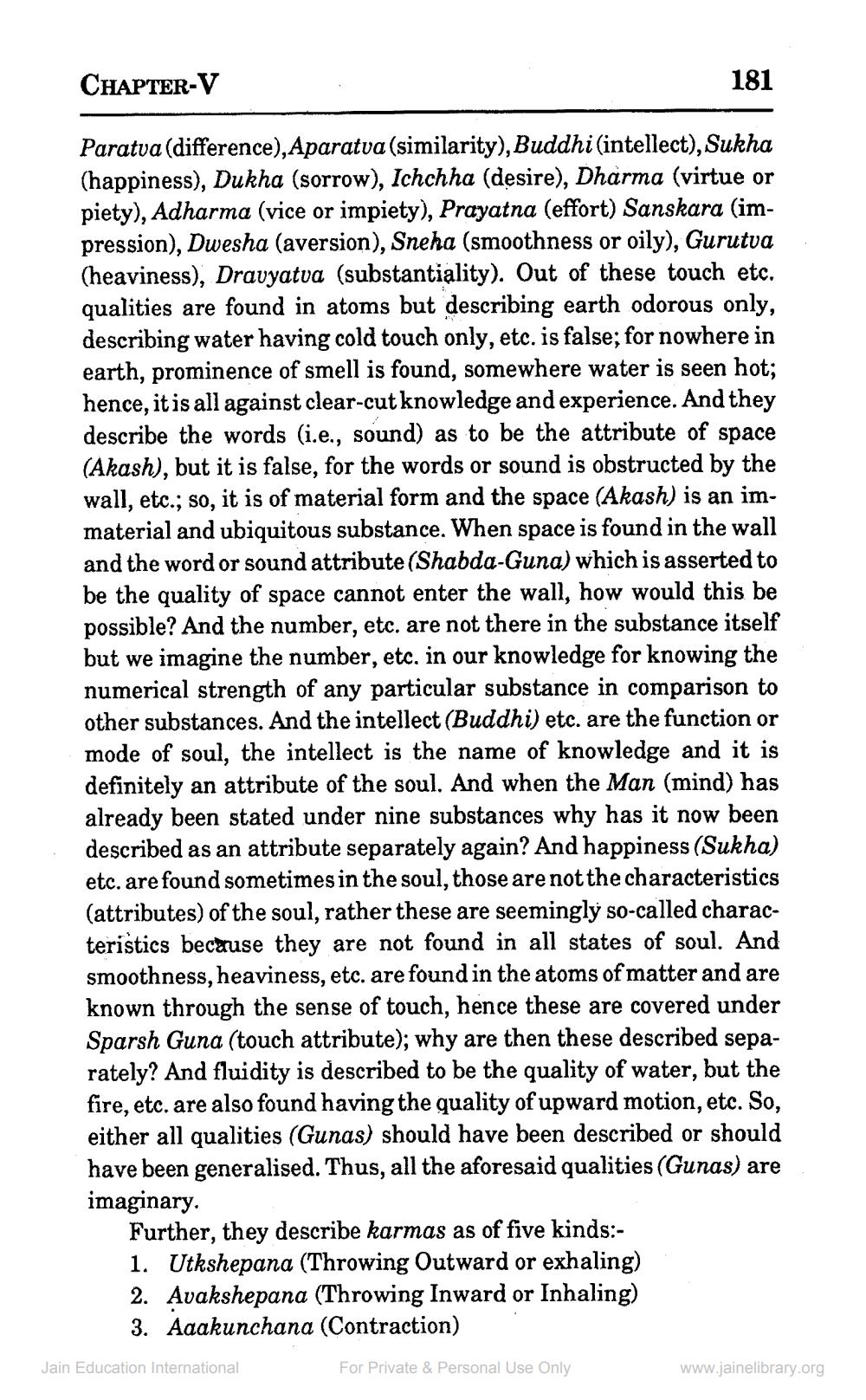________________
CHAPTER-V
181
Paratva (difference), Aparatva (similarity),Buddhi (intellect), Sukha (happiness), Dukha (sorrow), Ichchha (desire), Dharma (virtue or piety), Adharma (vice or impiety), Prayatna (effort) Sanskara (impression), Dwesha (aversion), Sneha (smoothness or oily), Gurutva (heaviness), Dravyatva (substantiality). Out of these touch etc. qualities are found in atoms but describing earth odorous only, describing water having cold touch only, etc. is false; for nowhere in earth, prominence of smell is found, somewhere water is seen hot; hence, it is all against clear-cut knowledge and experience. And they describe the words (i.e., sound) as to be the attribute of space (Akash), but it is false, for the words or sound is obstructed by the wall, etc.; so, it is of material form and the space (Akash) is an immaterial and ubiquitous substance. When space is found in the wall and the word or sound attribute (Shabda-Guna) which is asserted to be the quality of space cannot enter the wall, how would this be possible? And the number, etc. are not there in the substance itself but we imagine the number, etc. in our knowledge for knowing the numerical strength of any particular substance in comparison to other substances. And the intellect (Buddhi) etc. are the function or mode of soul, the intellect is the name of knowledge and it is definitely an attribute of the soul. And when the Man (mind) has already been stated under nine substances why has it now been described as an attribute separately again? And happiness (Sukha) etc. are found sometimes in the soul, those are not the characteristics (attributes) of the soul, rather these are seemingly so-called characteristics because they are not found in all states of soul. And smoothness, heaviness, etc. are found in the atoms of matter and are known through the sense of touch, hence these are covered under Sparsh Guna (touch attribute); why are then these described separately? And fluidity is described to be the quality of water, but the fire, etc. are also found having the quality of upward motion, etc. So, either all qualities (Gunas) should have been described or should have been generalised. Thus, all the aforesaid qualities (Gunas) are imaginary.
Further, they describe karmas as of five kinds:1. Utkshepana (Throwing Outward or exhaling) 2. Avakshepana (Throwing Inward or Inhaling) 3. Aaakunchana (Contraction)
Jain Education International
For Private & Personal Use Only
www.jainelibrary.org




